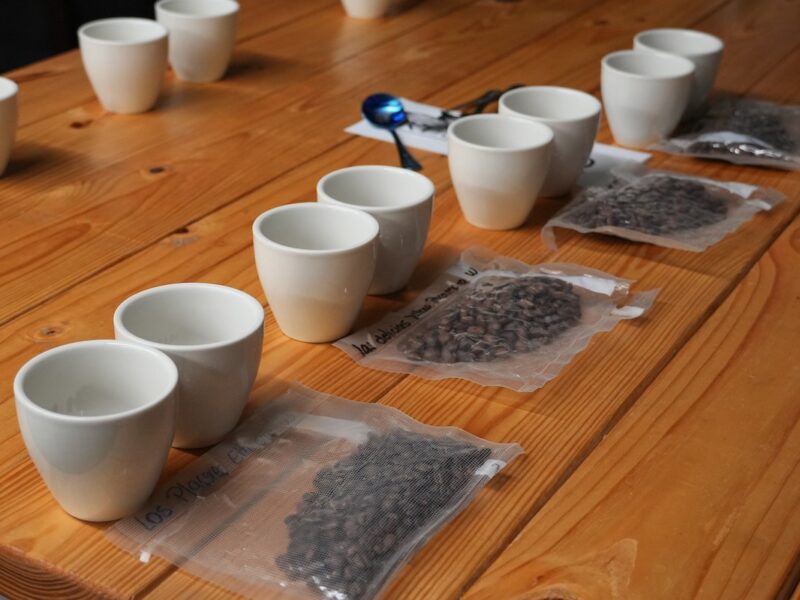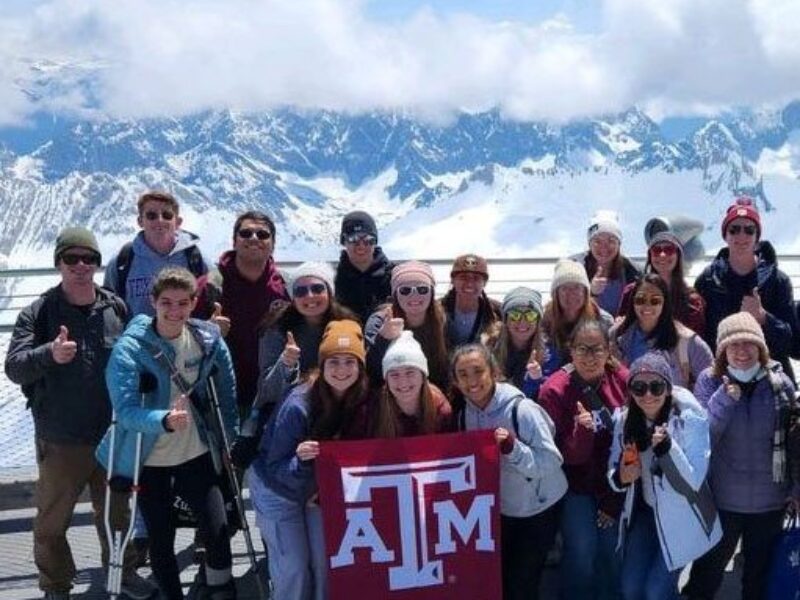Aggies Take First Study Abroad Trip To Antarctica
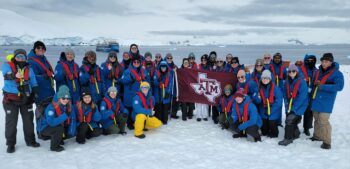
Texas A&M University’s first study abroad trip to Antarctica late in the fall semester included 36 students, faculty and staff from multiple disciplines who spent two weeks exploring Earth’s southernmost tip. The project was titled “Human Impacts On A Fragile Environment.”
Staff from Education Abroad joined the students on the journey, along with four Texas A&M faculty members who prepared students for the trip with interdisciplinary courses on atmospheric sciences, oceanography, cruise tourism and educational psychology that were purposefully aligned and customized for the trip. Faculty leaders included Dr. Jay Woodward, educational psychology department, School of Education and Human Development; Dr. Don Conlee, atmospheric sciences department, and Dr. Chrissy Wiederwohl, oceanography department, College of Arts and Sciences; and Professor Rick Harwell, hospitality, hotel management and tourism department, College of Agriculture and Life Sciences. The trip was open to graduate and undergraduate students of all fields of study.
Woodward described the trip as “an experiential and transformational learning opportunity” that reflects why Texas A&M is a leading university in sending students abroad. “I think it really showcased what Texas A&M strives to do. It’s not mere tourism. It’s transformational work,” he said.
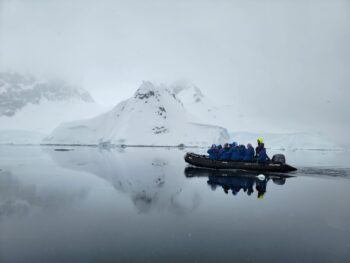
An Immersive Experience
Upon their return, eight of the students spoke of their experiences at a “Perspectives from Antarctica” event last month at the Annenberg Presidential Conference Center.
“Being in Antarctica is indescribable,” said Mary Chandra, a Houston native and third-year veterinary graduate student. “I had never seen that large of an area of nature completely untouched by humans, and that is what made it truly beautiful.”
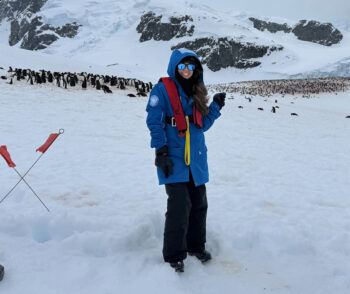
Chandra studied Antarctica’s penguin population and remarked that it was “very exciting” to see animals like penguins and seals in their natural habitat. During her presentation, she noted that the loss of sea ice due to increasing temperatures has led to declines in phytoplankton, microscopic creatures that are the foundation of the Antarctic food chain. Additionally, she said, the population of krill, which eat phytoplankton, is being threatened by increased fishing.
“It’s up to us, as future scientists, biologists, engineers, government officials — we can make changes and think outside the box on how we can reduce CO2 emissions and enforce krill fishing regulations,” Chandra said. “If we don’t make changes, the only way that we may see penguins is behind glass.”
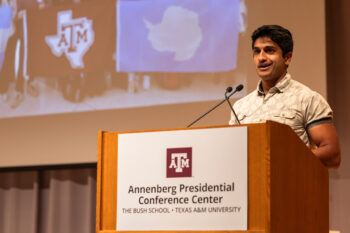
Another student who embarked on the journey is Akshaj “Akku” Kumar, a senior aerospace engineering major from Mechanicsburg, Penn., who examined the role of communication in facing modern challenges in Antarctica.
Kumar used a camera and microphone to record the activities of his classmates, professors and fellow travelers, and said he found new perspective by taking a step back and becoming an observer, learning much, especially from the expedition’s guides.
“While they didn’t leave out any details, they were able to take extremely esoteric topics such as Antarctic geology or oceanography and make it understandable and relatable. They did this by relating Antarctic issues to our own lives,” Kumar said, noting the critical importance of science communication in addressing threats to the continent. He said many scientists use jargon in conversations with non-scientists, “which immediately turns people off.”
“As the next generation of scientists… we need to make it a priority to explain difficult concepts in comprehensible ways,” he said.
Texas A&M University Libraries was a collaborator on the project, lending camera equipment to one student so she could document her experience. Alyssa Schaechinger, a master’s student in science, technology and journalism, shared photos and insights when she returned.
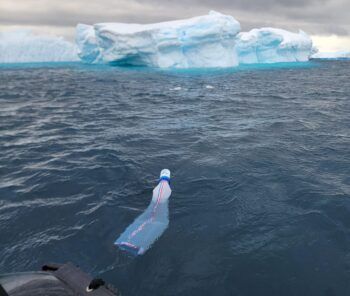
Wiederwohl’s oceanography students collaborated with the Fjord Phyto NASA-funded project to collect water samples to better understand phytoplankton community changes occurring in the Antarctic Peninsula. Atmospheric sciences students conducted daily weather briefings and collaborated with the international community of amateur (ham) radio enthusiasts who seek rare contact with Antarctica along with instrument manufacturers in conducting studies of ultraviolet (UV) B sensors to assess ozone hole impact. Traditional meteorological measurements were taken in all shore excursions and became part of the official expedition log.
Woodward said he is proud of all the students who took the journey. “They embraced the challenge, the call to take their learning to the next level,” he said. “One of the neatest things for me to see was these emerging student scholars come into their own, find a foothold or a passion for the field — learn what it truly means to be engaged.”
Additional student presenters were: Robert Early, College of Arts and Sciences, with “How Every Citizen Can Be A Scientist: Human Impacts On Antarctic Species Behavior”; Kevin Lawanto, School of Education and Human Development, with “No Continent Is Immune: Disaster Preparedness In Isolated, Confined, And Extreme (Ice) Environments”; Sydney Martinez, College of Arts and Sciences, with “The Psychological Effect Of Continuous Daylight To Circadian Rhythm Cycle In Antarctica”; Kayan Khraisheh, College of Arts and Sciences, with “Knowing Antarctica: Ethnographic Exploration in Extreme Environments”; Arjun Sengupta, College of Arts and Sciences, with “Seize the Moment: Mobile Photography in Polar Regions”; and Sarah Sualehi, School of Education and Human Development, with “Confronting Compartmentalized Bilingualism on a Journey to Antarctica.”
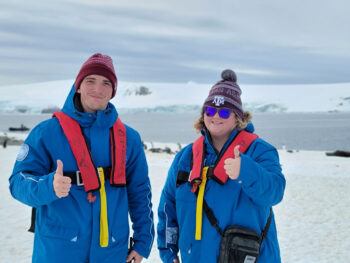
Media contact: Lesley Henton, lshenton@tamu.edu
